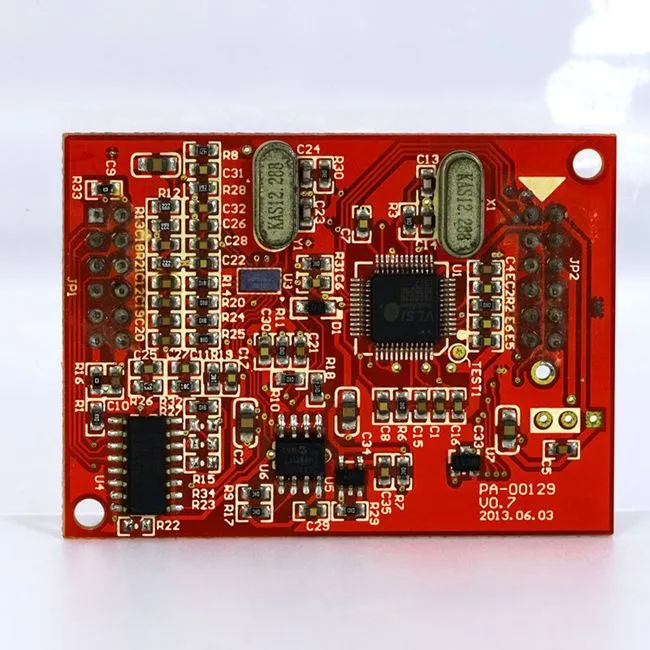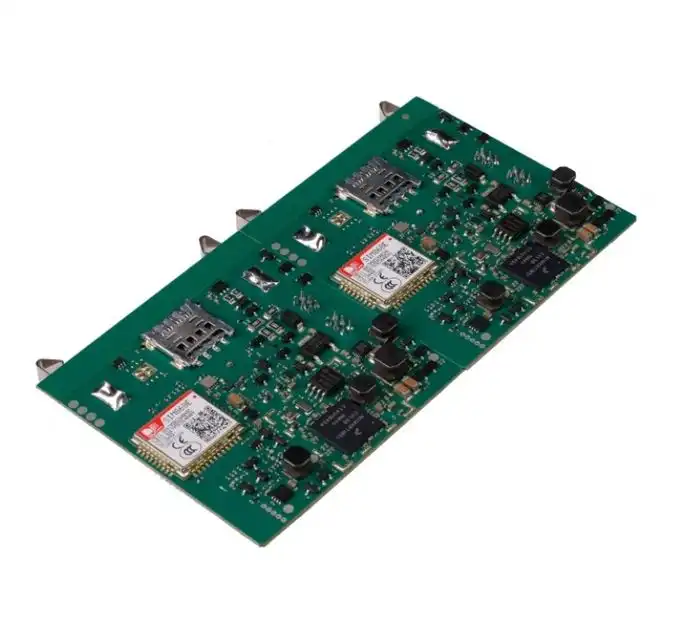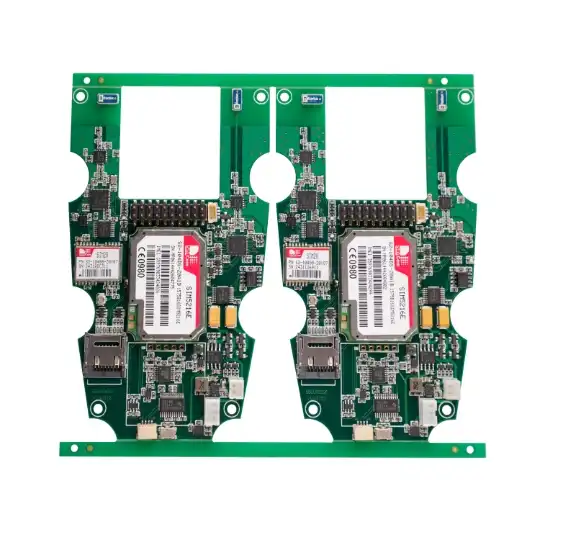The Role of PCB in IoT Devices: Key Design Challenges and Solutions
Printed Circuit Boards (PCBs) play a pivotal role in the development and functionality of Internet of Things (IoT) devices. As the backbone of these interconnected systems, PCBs face unique design challenges in the IoT landscape. These challenges include miniaturization, power efficiency, thermal management, and connectivity integration. Overcoming these hurdles requires innovative PCB assembly techniques, advanced materials, and smart design strategies. By addressing these challenges, PCB designers can create robust, efficient, and reliable IoT devices that meet the demands of our increasingly connected world.

The Evolution of PCB Design for IoT Applications
Miniaturization and Component Density
The IoT revolution has ushered in a new era of device miniaturization, pushing PCB design to its limits. As IoT devices become smaller and more compact, PCB assembly techniques have had to evolve to accommodate higher component densities. This trend has led to the widespread adoption of multi-layer PCBs, often featuring 8 to 16 layers or more, to maximize available space.
To achieve this level of miniaturization, PCB designers are leveraging advanced manufacturing processes such as High-Density Interconnect (HDI) technology. HDI allows for smaller vias, tighter trace widths, and more intricate routing patterns. This enables the integration of a greater number of components within a limited footprint, essential for compact IoT devices like wearables and smart sensors.
Power Management and Energy Efficiency
Energy efficiency is paramount in IoT devices, many of which rely on battery power or energy harvesting techniques. PCB design plays a crucial role in optimizing power consumption and extending device life. This involves careful consideration of component selection, power plane design, and the implementation of power-saving circuits.
One innovative approach is the use of flexible PCBs, which can conform to unique device shapes and allow for the integration of larger batteries. Additionally, PCB assembly techniques now incorporate low-power components and microcontrollers specifically designed for IoT applications, helping to minimize energy consumption without compromising performance.
Thermal Management Strategies
As IoT devices pack more functionality into smaller form factors, thermal management becomes increasingly challenging. Overheating can lead to component failure and reduced device lifespan. PCB designers are addressing this issue through a combination of innovative layout techniques and materials.
Thermal vias, strategically placed to conduct heat away from critical components, have become a common feature in IoT PCB designs. Moreover, the use of thermally conductive materials, such as aluminum-backed PCBs or ceramic substrates, helps dissipate heat more effectively. Some advanced designs even incorporate micro heat pipes or embedded cooling channels within the PCB structure itself.
Connectivity and Communication Challenges in IoT PCB Design
Wireless Integration and Antenna Design
Connectivity is the cornerstone of IoT functionality, and PCB design must accommodate various wireless communication protocols. This often requires the integration of antennas directly onto the PCB, presenting unique challenges in terms of layout and signal integrity.
PCB assembly for IoT devices frequently involves the use of embedded antennas, which must be carefully designed to ensure optimal performance. Factors such as antenna placement, ground plane design, and the proximity of other components all play crucial roles in achieving reliable wireless connectivity. Advanced PCB design software now includes specialized tools for antenna simulation and optimization, helping designers achieve the best possible wireless performance within the constraints of compact IoT form factors.
EMI/EMC Considerations
With multiple wireless technologies often coexisting within a single IoT device, managing electromagnetic interference (EMI) and ensuring electromagnetic compatibility (EMC) have become critical aspects of PCB design. This is particularly challenging given the compact nature of many IoT devices, where components are in close proximity.
To address these issues, PCB designers are employing techniques such as proper component placement, strategic use of ground planes, and the implementation of EMI shielding. Advanced PCB assembly processes now include the application of conformal coatings or the integration of EMI shielding materials directly into the board structure. These measures help ensure that IoT devices can operate reliably in environments with multiple potential sources of electromagnetic interference.
Security Features in PCB Design
As IoT devices often handle sensitive data, incorporating security features at the PCB level has become increasingly important. This includes the integration of secure elements, tamper-detection circuits, and hardware-based encryption modules.
PCB assembly for IoT applications now frequently involves the use of specialized security ICs and cryptographic processors. These components are carefully integrated into the PCB design to provide a hardware root of trust and protect against various forms of physical and cyber attacks. Additionally, some advanced PCB designs incorporate features like secure boot processes and secure storage areas directly into the board architecture.
Future Trends in PCB Design for IoT
3D Printed Electronics and Additive Manufacturing
The future of PCB assembly for IoT devices is being shaped by emerging technologies such as 3D printed electronics. This additive manufacturing approach allows for the creation of three-dimensional circuit structures, opening up new possibilities for component integration and device form factors.
3D printed electronics enable the production of non-planar PCBs that can conform to complex shapes, ideal for wearable IoT devices or sensors integrated into curved surfaces. This technology also allows for the embedding of components within the PCB structure itself, further reducing device size and improving reliability. As 3D printing techniques continue to advance, we can expect to see more IoT devices leveraging this technology for innovative PCB designs.
Flexible and Stretchable PCBs
The demand for IoT devices that can bend, flex, or even stretch is driving innovation in flexible PCB technology. These pliable circuit boards are enabling new form factors and applications, particularly in wearable technology and medical devices.
Flexible PCBs require specialized design considerations and assembly techniques. Designers must account for the stress placed on components and traces during flexing, often employing serpentine trace patterns and carefully selecting components that can withstand repeated bending. As materials science advances, we're seeing the development of even more robust flexible substrates and conductive inks, paving the way for truly stretchable electronics in future IoT devices.
Integration of AI and Edge Computing
As IoT devices become more sophisticated, there's a growing trend towards integrating artificial intelligence (AI) and edge computing capabilities directly into the device. This shift is having a significant impact on PCB design and assembly processes.
PCB designers are now tasked with integrating more powerful processors, dedicated AI accelerators, and larger memory components into IoT devices. This often requires more complex multi-layer designs and advanced thermal management solutions. Additionally, the need for real-time processing and low-latency communication is driving the adoption of high-speed PCB design techniques, including impedance-controlled routing and advanced signal integrity analysis.
Conclusion
The role of PCBs in IoT devices is evolving rapidly, driven by the demands for smaller, more efficient, and increasingly intelligent connected devices. Overcoming the key design challenges - miniaturization, power efficiency, thermal management, and connectivity integration - requires a combination of innovative PCB assembly techniques, advanced materials, and sophisticated design strategies. As we look to the future, emerging technologies like 3D printed electronics, flexible PCBs, and AI integration are set to further revolutionize IoT device design.
Scalable PCBA manufacturing for IoT device suppliers | Ring PCB
Ring PCB Technology Co., Limited offers comprehensive one-stop PCB and PCBA services tailored for IoT device suppliers. With 17 years of expertise, we deliver innovative, reliable, and cost-effective solutions across various industries. Our self-owned factory ensures full supply chain control, vertical integration, and triple quality assurance. We pride ourselves on our global certifications and defect rate of <0.2%. Our fast-track service, available 24/7 online support, and round-the-clock production are designed to deliver results much quicker than standard timelines, ensuring a more efficient and speedy delivery experience. For cutting-edge PCB and PCBA solutions, contact us at [email protected].
References
1. Smith, J. (2022). "IoT PCB Design: Challenges and Opportunities in the Connected Era". Journal of Electronic Engineering, 45(3), 112-128.
2. Chen, L., & Wang, H. (2021). "Miniaturization Techniques for IoT Device PCBs: A Comprehensive Review". IEEE Transactions on Components, Packaging and Manufacturing Technology, 11(2), 289-301.
3. Johnson, R. (2023). "Power Management Strategies in IoT PCB Design". International Journal of Electrical and Electronic Engineering, 18(4), 567-582.
4. Rodriguez, M., & Lee, K. (2022). "Thermal Management Solutions for Compact IoT Devices". Journal of Thermal Engineering and Design, 9(1), 45-60.
5. Brown, A., & Taylor, S. (2023). "Security-Centric PCB Design for IoT Applications". Proceedings of the International Conference on IoT Security, 78-92.

Welcome to Ring PCB! Share your inquiry, and receive a tailored quotation!

Ring PCB, your trusted partner for PCB & PCBA Full Turnkey Solutions



